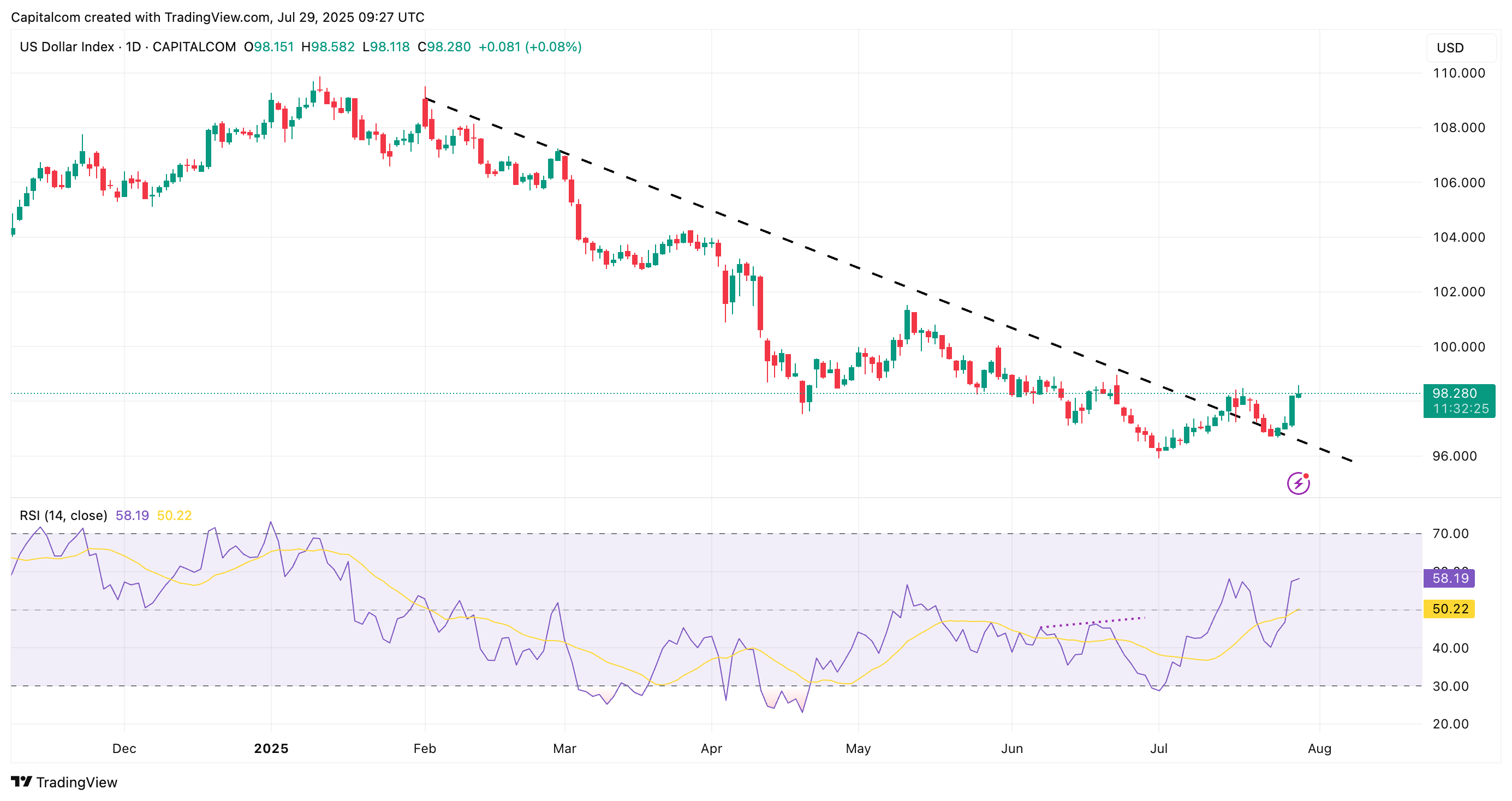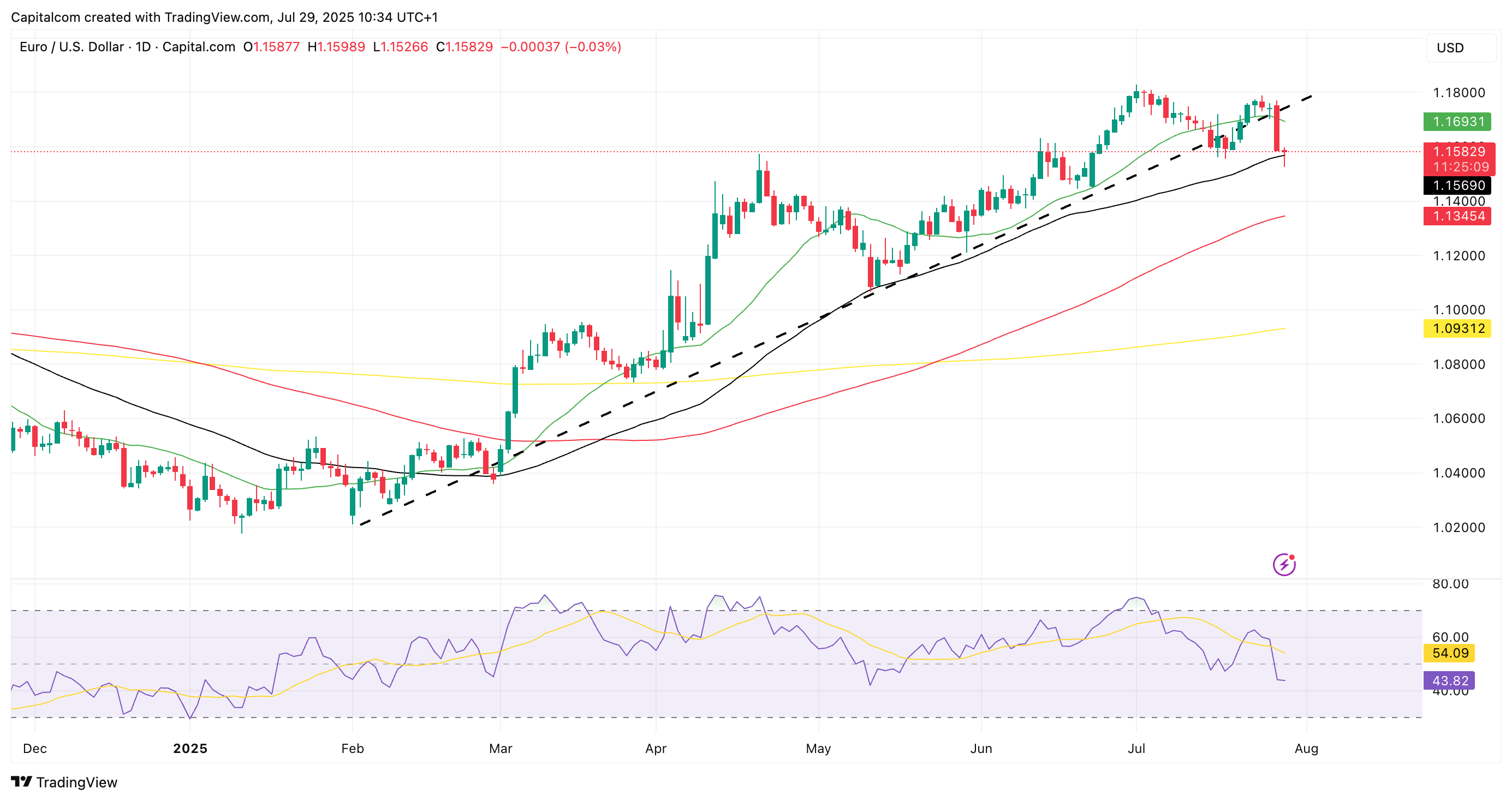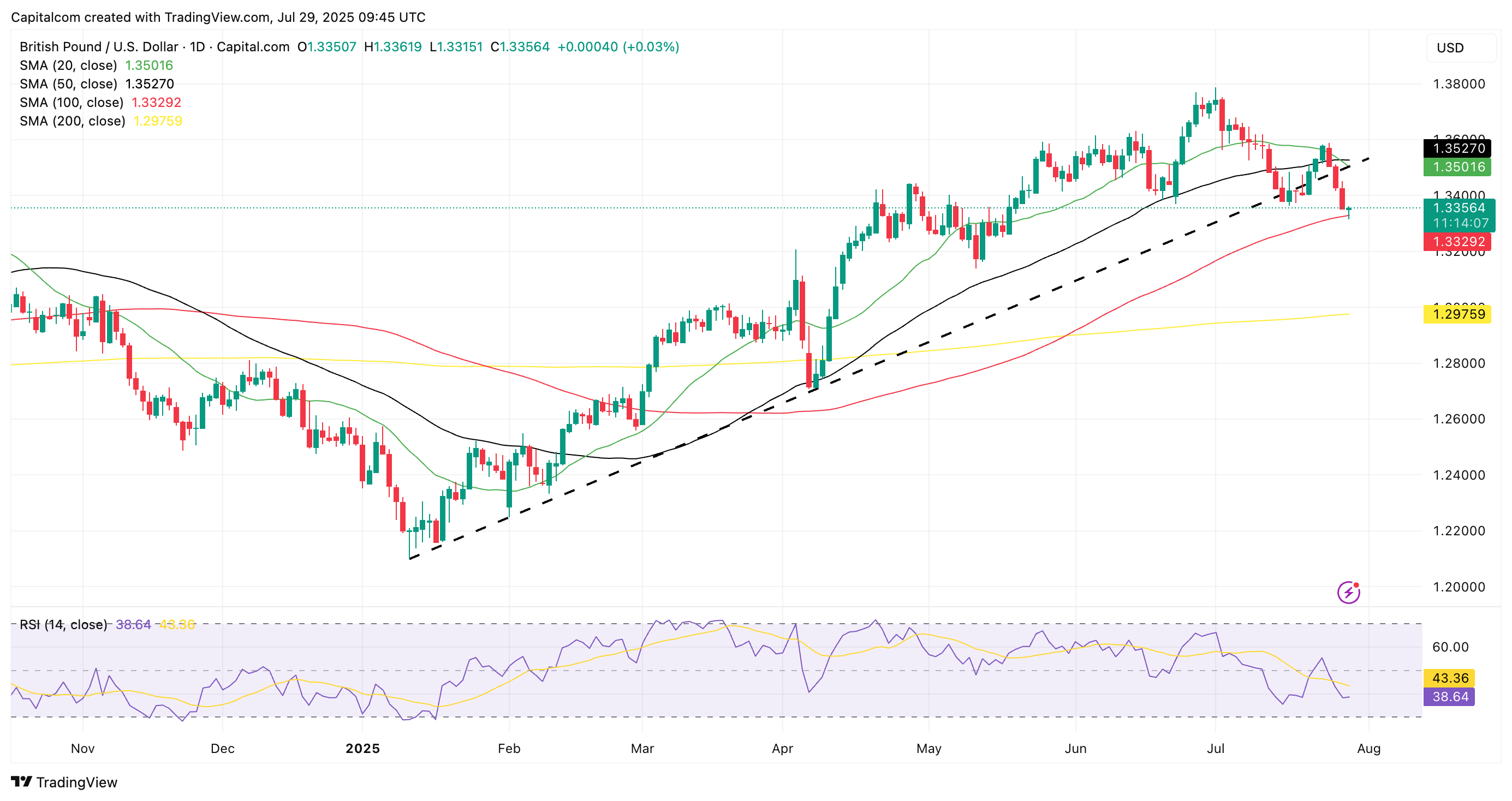USD Latest: DXY, EUR/USD and GBP/USD
The US dollar recovers some bullish momentum as trade tensions ease and economic resilience keeps the Fed from cutting rates
The U.S. dollar has seen modest strength in recent sessions, with the Dollar Index (DXY) climbing above 98.5 as optimism grows around new trade agreements and resilient U.S. economic data. The removal of extreme tariff threats—particularly with the European Union and Japan—has helped ease market anxiety, giving the dollar some tailwind. However, despite recent gains, the DXY posted a slight weekly loss of around 0.2%, its largest decline in more than a month, and remains capped near its 50-day moving average around the 98.95 level.
Economic fundamentals continue to support the dollar. Stronger-than-expected U.S. retail sales, a rebound in services activity, and robust labour market indicators have tempered market expectations for aggressive Federal Reserve rate cuts. With yields supported and the U.S. maintaining a relative advantage over its global peers in monetary policy, the dollar has found underlying strength. The Fed’s “higher-for-longer” stance also reinforces the dollar’s short-term appeal, especially as other major central banks lean more dovish.
The latest round of trade agreements is another factor bolstering the greenback. By removing some of the immediate risks related to tariffs—once forecast at 30–50%—the deals help reduce uncertainty, prompting investors to reallocate into dollar-denominated assets. Still, broader structural concerns remain. Fiscal imbalances, declining foreign investment appetite, and de-dollarization efforts, could weigh on the dollar in the longer term.
US Dollar index (DXY) daily chart

Past performance is not a reliable indicator of future results
From a technical perspective, the DXY faces firm resistance at the 98.3–98.90 zone. If it fails to break above this level, a reversal toward the support range of 96.60–97.0 could follow. A drop below that support would expose the index to a return toward the July lows just below 96.00. On the other hand, a decisive move above 98.90 could open the door to more sustained strength, particularly if upcoming U.S. economic data beats expectations.
Investor sentiment remains mixed. On one hand, the dollar is benefiting from short-term macroeconomic resilience and receding trade risks. As a result, the greenback remains the currency of choice amid a backdrop of stable U.S. growth, moderating inflation, and a Federal Reserve that is in no rush to ease policy.
The dollar’s performance is also impacting global markets. Emerging market currencies and European exporters are feeling the pressure, especially as the euro and pound have started to face mounting downside pressure. As a result, both EUR/USD and GBP/USD have dropped below their July lows, with their respective RSIs slipping below 50. EUR/USD has slipped below its 50-day SMA (1.1569) early on Tuesday, but the momentum has so far reversed higher, suggesting the upside trend could still be in play despite having broken below the ascending trendline connecting the ascending lows from the start of the year. From here, a break below 1.15 could signal further appetite for sellers whilst 1.1635 could reignite some further upside.
EUR/USD daily chart

Past performance is not a reliable indicator of future results
Meanwhile, GBP/USD is struggling to contain the downside as it pushes to a 10-week low below 1.3350. Unlike the US, the UK economy faces an increased risk of stagflation, with inflation proving to be sticky in some areas of the economy, whilst growth is struggling to keep up. The loss of confidence in UK assets could weigh further on the pound, at a time when the dollar is recovering some appetite, which could see GBP/USD continue to face downside pressure. The pair is currently converging towards an area (1.3250 – 1.3400) where sideways consolidation has happened in the past, suggesting some support could arise in the short term.
GBP/USD daily chart

Past performance is not a reliable indicator of future results
In summary, the U.S. dollar remains supported in the near term by positive trade developments, solid economic data, and firm rate expectations. However, technical resistance and long-term structural concerns continue to cast a shadow over its durability. The next phase for the dollar will likely depend on whether upcoming inflation and jobs data further strengthen or weaken the case for holding U.S. assets.